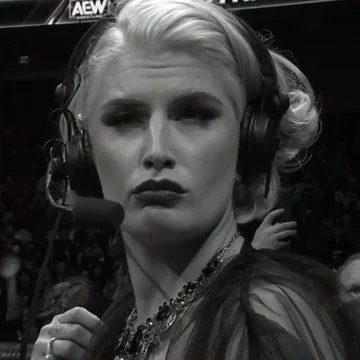Car insurance is relatively simple. I shop around, telling them how much coverage I want. They request my driving history, and give me a quote. At any time, I can shop around and change insurance policies without any problems. Once it’s time to collect payment, it’s a relatively simple matter. What makes health insurance so difficult, controlling, unreliable, and expensive? For example, with health insurance:
-
Can only shop during a specific enrollment period
-
Policies are so complex, the vast majority of the population can’t understand them
-
It’s commonly provided in part by the employer because buying a policy otherwise is prohibitively expensive
-
Insurance companies are notorious for denying payments
Car insurance isn’t efficient nor effective. It’s a complete ripoff.
Go file a claim, see how much grief they put you through. Every claim I’ve ever made, I’ve had to file a complaint with the state insurance regulators to get my insurance company to reimburse me (and I’ve never been at fault).
Insurance is the problem for both cars and health. They artificially inflate pricing for both, because they get to determine what is paid and at what rates (especially for health care).
It’s why you hear stories of things like tylenol at the hospital being $10 a pill. Since insurance may only reimburse the hospital at 10% of the filed claim, the hospital increases the cost 10x. (It’s more complex that this, it’s why medical coding is a specific job now, finding ways to code things to get sufficiently reimbursed).
My sister lives in British Columbia, and from what I’ve heard, they have single-payer provincial government run car insurance (in addition to health insurance like the rest of Canada). It sounds awesome.
Now I think of it, it’s odd that British Colombia is nowhere near either Brittain nor Colombia
I have made two claims with my insurance and they paid without any pushback. I think that’s just your insurance company. I would highly encourage you to name and shame.
Yeah I’ve also had 0 issues with my insurance the two times I’ve used them.
Hell when I went to a repair shop I insisted on only OEM parts and the guy there said insurance typically wouldn’t replace that part OEM. But when I asked them about it they said they were happy to keep things 100% OEM.
I also had to get the state involved when the insurance agent just wouldn’t return my calls
Might be your company, I’ve had 3 not at fault and 1 at fault accident and I’ve never had any issues with the insurance company paying out. In fact, my insurance has always been super chill about it, and the two not at faults that involved another driver both had the opposing insurance company tried to screw around to get out of paying.
I’ve had 3 not at fault and 1 at fault accident
A number of states have moved to ‘no fault’ insurance, with the claim that it would save everyone money. Surprise, insurance rates go up, sharply, and insurance companies end up being less responsive to claims.
How do you file a complaint? I had frame swap that cost almost 20k a couple years ago after getting rear ended and my insurance said the diminished value was only 60 bucks. I never even cashed the check I was so pissed.
I agree that insurance companies are a scam, but it sounds like you had the work done before repairs and shops were agreed on? Insurance companies generally work like that…
I did not. I went to one of their “approved” shops and they paid them directly.
I also have to say I’ve had only good experiences with my current insurance provider (Amica) but I also pay a little more. My mom got an at fault accident in my car she borrowed when her car was in the shop and it was handled without complaint nor did they raise my rates.
But you’re still right about a lot of others. I’m almost certain GEICO or Progressive would have raised mine. I wish it was regulated such that my experience is the mandatory norm.
Why doesn’t America join the first world and provide Universal Health Care?
Because rich people on large corporations refuse to pay their fair share of taxes
Those rich people also are shareholders of the insurance companies
Yes and they also own politicians.
Because the American system provides for a rich ecosystem of middlemen and lobbyists. If we switch to Universal Healthcare, what will they do? Code?
deleted by creator
deleted by creator
Trump’s existence doesn’t make Obama’s health care plan suck any less.
Also: “Your guy sucks as badly as our guy” isn’t the awesome rebuttal you think it is.
(Plus I’m not a Trump supporter.)
hey, I edited and deleted my shit bc I couldn’t get it to present correctly, so feel free to delete! I’m pretty sure we’re pointed in the same direction!
cheers,
Sure thing, man. Cheers.
^This is a media manipulation account
No one knows, but for sure the reason is something rotten. I’ve never ever heard a reasonable argument against it.
Not the entire “first world” has universal health care. The Netherlands for example has only 62% UFC. Which is fairly managable in paractice, with proper regulations and support for thos ewho can’t pay the €120 obligatory monthly insurance fee, but obviously it’s complete bullshit.
At its very core, an insurance company operates by: 1) pooling policyholder’s risks together and 2) collecting premiums from the policyholders based on actuarial data, to pay claims and maybe make a small profit. But looking broader, an insurance market exists when: a) policyholders voluntarily or are obliged to obtain policies, b) insurers are willing and able to accept the risks in exchange for a premium expected to support the insurance pool, and c) the actuarial risks are calculable and prove true, on average.
The loss of any of A, B, or C will substantially impact a healthy insurance market, or can prevent the insurance market from ever getting started. For some examples of market failures, the ongoing California homeowner insurance crisis shows how losing B (starting with insurers refusing to renew policies near the wildland-rural interface) and C (increase in insured losses due to climate change) results in policies becoming unaffordable or impossible to obtain.
As a broader nationwide example, an established business sector that operates wholly without insurance availability is cannabis. A majority of US States have decriminalized marijuana for medical use, and a near-majority have legalized recreational consumption. Yet due to unyielding federal law, no insurer will issue policies for marijuana businesses, to protect from risks that any business would face, such as losses from fire, due to a product recall or product liability, or for liability to employees. These risks are calculable and there’s a clear need for such policies – thus meeting criteria A and C – but no commercial insurer is willing to issue. Accordingly, the formal market for cannabis business insurance is virtually non-existent in the USA.
With these examples, we can see that the automobile insurance market meets all three criteria for a healthy market, but it’s how these criteria are met which is noteworthy. Motorists in the USA are obliged to insure in every state except New Hampshire and Virginia: it is a criminal offense to drive a car without third-party liability insurance, meaning the motorist might spend time in jail. Note: NH and VA won’t send a motorist to jail, but they do have administrative penalties for driving without “financial responsibility”, which includes insurance or a bond at the DMV.
The exact requirement varies per state, with some requiring very low amounts of coverage and others requiring extra coverage like Personal Injury Protection (PIP, aka no-fault insurance). The point is that criteria A is easily met: motorists want to avoid jail, but also want to avoid the indignity of being sued after having caused a road incident, in addition to protecting their apparently only viable mode of transportation.
Insurers can take into account the overall trends in national risks trends for automobiles (eg new car safety, through the Insurance Institute for Highway Safety, IIHS) as well as local or hyper-local risks (eg hail damage in the southeast, property crime in a particular zip code). And as a large country with nearly as many cars as people, many insurers are willing to meet the demand. This satisfies criteria B and C.
So well-organized is the automobile insurance market that you could almost say that it’s vertically integrated: the largest nationwide insurers have contracts in place with every dealership network, auto collision chain, new and used parts dealers, as well as automatic data sharing with state DMVs, plus with firms like CarFax that buy information. Despite each state being slightly different, the insurers have overcome and achieved a level of near uniformity that allows an efficient market to exist.
Things are drastically different for the American healthcare system and for American health insurance companies. While most think of their healthcare provider as a national name like Anthem Blue Cross or Kaiser Permanente, the reality is that each state is an island, and sometimes counties in a state are enclaves. Even federal programs like Medicaid and Medicare are subject to state-level non-uniformities. For example, hospitals can be either privately operated (eg religion-affiliated, or for-profit) or run by a public entity (eg county or state), and can exist as a single entity or form part of a regional hospital network. Some entities operate both the insurance pool as well as providing the health care (eg HMOs like Kaiser Permanente) while others dispatch to a list of contracted providers, usually being doctor’s own private practices or specialist offices.
With so many disparate entities, and where healthcare is a heavily-regulated activity by each state, the cost of insurable risks – that is, for routine healthcare services – is already kinda difficult to compute. Hospitals and doctors go through intense negotiations with insurers to come to an agreement on reimbursement rates, but the reality is that neither has sufficient actuarial data to price based on what can be borne by the market. So they just pass their costs on, whatever those may be, and insurers either accept it into their calculations, or drop the provider.
Suffice it to say, there are fewer pressure to push the total cost of healthcare down, given this reality, and more likely prices will continue to climb. This fails criteria C.
Briefly speaking, it’s fairly self explanatory why people would want health insurance, since the alternative is either death or serious health repercussions, paying out-of-pocket rates for service, or going to the ER and being burdened by medical debt that will somehow haunt even after death. Criteria A is present.
As for Criteria B, that was actually resolved as part of the Affordable Care Act (ACA). During discussions with the drafters, insurers bargained for an obligation for everyone to have insurance (aka the individual mandate, bolstering criteria A), in exchange for an obligation to issue policies for anyone who applies, irrespective of pre-existing health conditions. Thus, Criteria B is present for all ACA-compliant policies in the USA, even though the individual mandate was later legislatively repealed.
So to answer your question directly, the costs for healthcare in the USA continue to spiral so far out of control that it causes distortions in the health insurance market, to everyone’s detriment. Specific issues such as open-enrollment periods, employer subsidies, and incomprehensible coverage levels all stem from – and are attempts to reduce – costs.
Enrollment periods prevent people from changing plans immediately after obtaining an expensive service, like a major surgery. Employer subsidies exist due to a federal tax quirk decades ago, which has now accidentally become an essential part of the health insurance and health care situation. And coverage levels try to provide tiered plans, so people can still afford minimal coverage for “catastrophic” injuries while others can buy coverage for known, recurring medical needs.
But these are all bandaging the bleeding which is unchecked costs. It would take an act of Congress – literally – or of state legislatures to address the structural issues at play. The most prominent solution to nip costs is the bud is to achieve the same near-vertical integration as with automobile insurance. This means a single or very few entities which have contracts in place with every provider (doctors and hospitals), negotiated at once and uniformly, so as to achieve criteria C. The single-payer model – which Medicare already uses – is one such solution.
Going further would be the universal healthcare model, which discards the notion of health insurance entirely and creates an obligation for a government department to provide for the health of the citizens, funded by taxes. This means doctors and hospitals work at the behest of the department for the citizenry, or work privately outside the system entirely, with no guarantee of a steady stream of work. Substantial administrative savings would arise, since the number of players has been reduced and thus simplifies things, including the basic act of billing and getting paid for services rendered.
These models could be approached by individual states or by the nation as a whole, but it’s unclear where the Overton window for that idea currently is.
Thanks for taking the time to write such an informed and in-depth comment!
Indeed! Bestof’d.
That is an extremely well-written and researched answer!
Agreed. Bestof’d.
I find it hard to believe that a far market can exist when everyone is required or effectively required to purchase something. If you think of supply and demand, the demand for something like health insurance or legally mandated car insurance is effectively infinite.
The decision to get car insurance or not is not “is the value this car insurance provides worth the money” it’s “is the value this car provides worth the money”. Similarly, the value of health insurance becomes the value of getting any sort of medical treatment, because it’s generally impossible to get treatment otherwise.
This allows the insurance companies to charge rates far beyond the value they actually provide, because they are legal gatekeepers to far more valuable opportunities.
Assuming that demand for car insurance is artificially inflated because people are mandated to purchase it, wouldn’t an open market still drive down prices due to competition? Another market that has even more demand is food. People aren’t even legally mandated to buy food. They either buy it or die. There may be a few people that can grow enough of their own food to sustain themselves without ever purchasing it, but I would guess that there are more people that make enough money to live without insurance than people that grow all of their own food. Despite that, food seems to be relatively affordable. If one food vendor is charging too much or I don’t like their product, I can easily go to a competing food vendor and purchase there. Adam’s invisible hand then ensures that the market provides an efficient quality-to-price ratio. I’m not arguing it’s perfect, but we don’t hear about how food stores are ripping us off as much as we do about insurance companies. My argument is that despite there being inflated demand, the insurance companies still have to compete with each other for those customers, which would have a considerable impact on price. Let’s say we all buy cars that are valued at $20k. If one company is providing insurance for $100/month and the other company is charging $150/month, everything else being equal, the former would earn more customers.
Also, since demand is high, I think it would LOWER rates. Here’s why. If insurance was not mandated, then the people that would get it would include everyone that thinks they may need it. The ones that think they will not use it will avoid wasting their money since they’re not receiving anything in return. That means that there will be less contributions and more expenditures from the pooled money, making insurance more expensive. Mandate insurance makes it so that even the people that will not use it contribute to the pool, so everyone’s costs are lower than otherwise. Of course, this would only happen in a market that allows for competition. Otherwise, if there were only one insurance provider, they would be in a position to price gouge everyone since the only other option would be to break the law.
So many explanations, but here’s a summary: The concept of the efficiency of free markets is an illussion. Especially in conditions of guaranteed damand
By tying insurance to employment (side effect of some economic policy) the option to shop around was removed. When people are already forced to use the insurance provided by employment so that they can afford it, there is no way for some other insurance agency to be competitive. Then it just got worse over the years.
The ACA attempting to make a competitive market was a half assed substitute for just going all in on single payer, but at least people with the jobs that don’t provide insurance have the possibility of affording it now so it is better. Just getting stabbed instead of being shot better.
You, don’t have any bargaining power regarding your health. Let’s say you broke a arm, a Mundane thing. You’re in pain, and would do anything to make it stop. Once they give you some morphine, you’re high and can’t take any reasonable decision.
Moreover, you can decide to thrash away a car, it happens all the time, you can’t do it with your life.
Because it’s rigged against you. US has the most expensive health care in the world - It’s not natural, this is crafted oligopoly to gouge the prices
(easier for health insurance companies to double-dip this way)
Because Americans care about cars.
It is effective and efficient, just not for the consumer.
Not all cars and drivers have accidents, but everybody in his/hers life WILL need health care of some kind
You also cant declare a body a writeoff and just cut someone a cheque for a new one.
Can only shop during a specific enrollment period.
With most other insurance, it only pays out of something unplanned happens. With health insurance, there are medical issues that can be known about in advance of them being to be addressed. So you might know you have a heart condition that needs to be operated on soon, but not immediately. This is known as a medical precondition.
Before the ACA was passed, health insurance companies would always exclude medical preconditions. So, if you switched insurance while needing that heart operation, you would find that you weren’t covered and have to pay all the costs.
The ACA got rid of being able to limit coverage of medical preconditions, but it needed to provide a way for insurance companies to limit their exposure to people switching from a bad plan to an amazing plan that covered everything and would have to pay out immediately. To handle that, it made it a requirement for all people to get a minimum amount of medical insurance and to restrict when people could shop for insurance.
universal health cover is also realtively simple too…
Regulatory capture
Because the customer and user are not the same people and insurance is keeping the costomer happy. High prices mean I cannot afford to quit my job or retire early. I have to have a job to have any form of insurance at all. It is great for the hr department that buys my insurance. In theory I can buy my own on the market but that means the thousand dollars a month my employer is paying gets thrown away.










